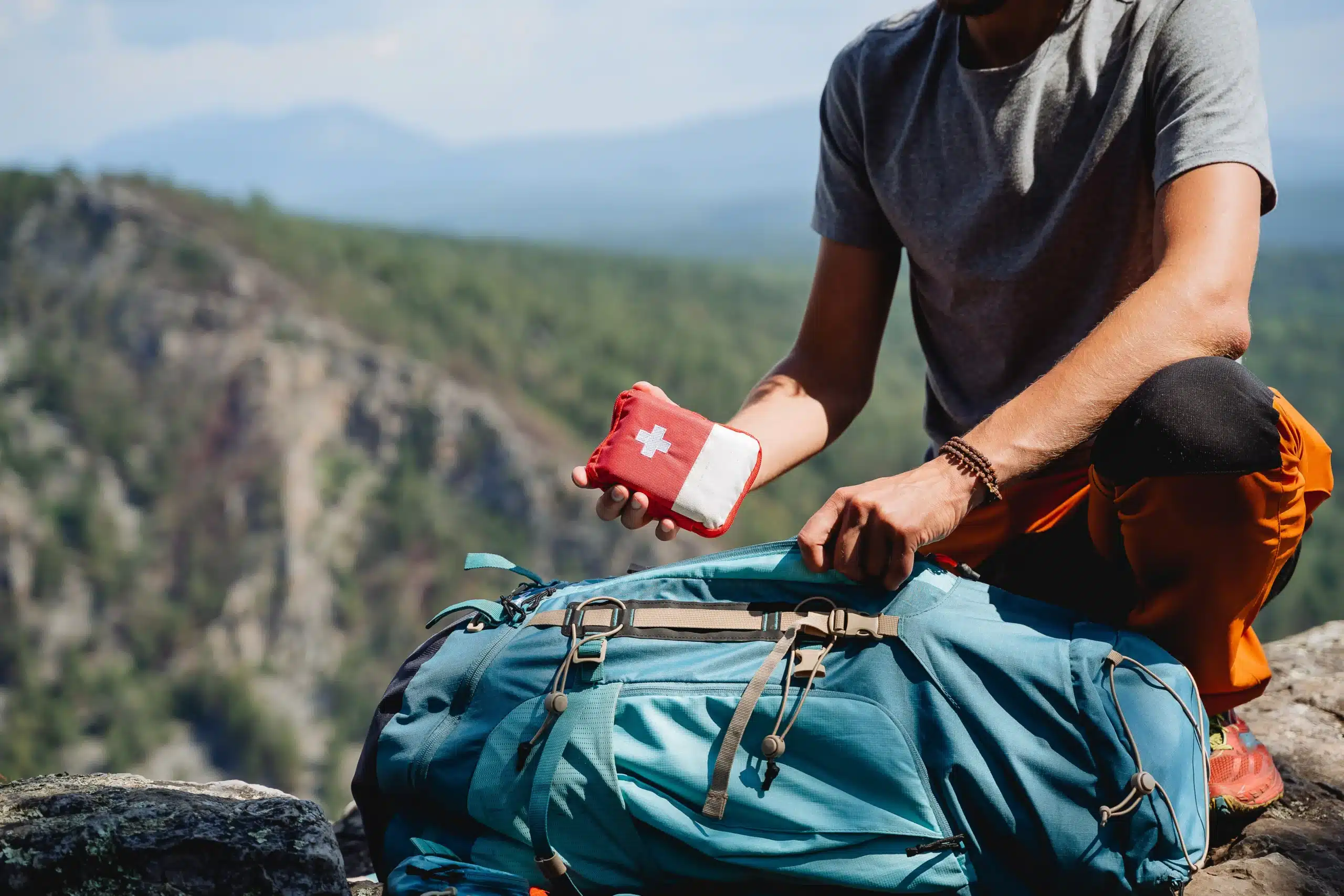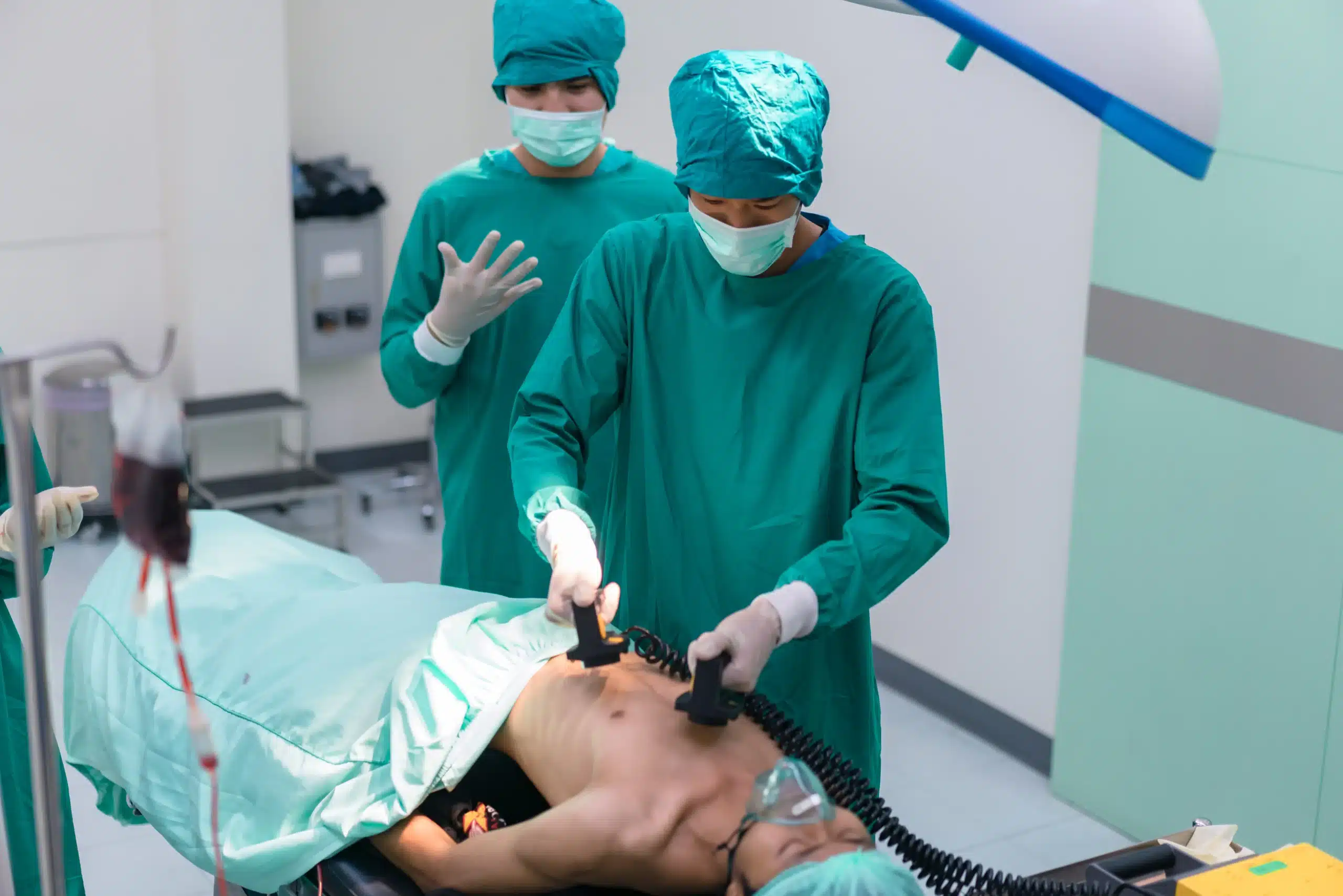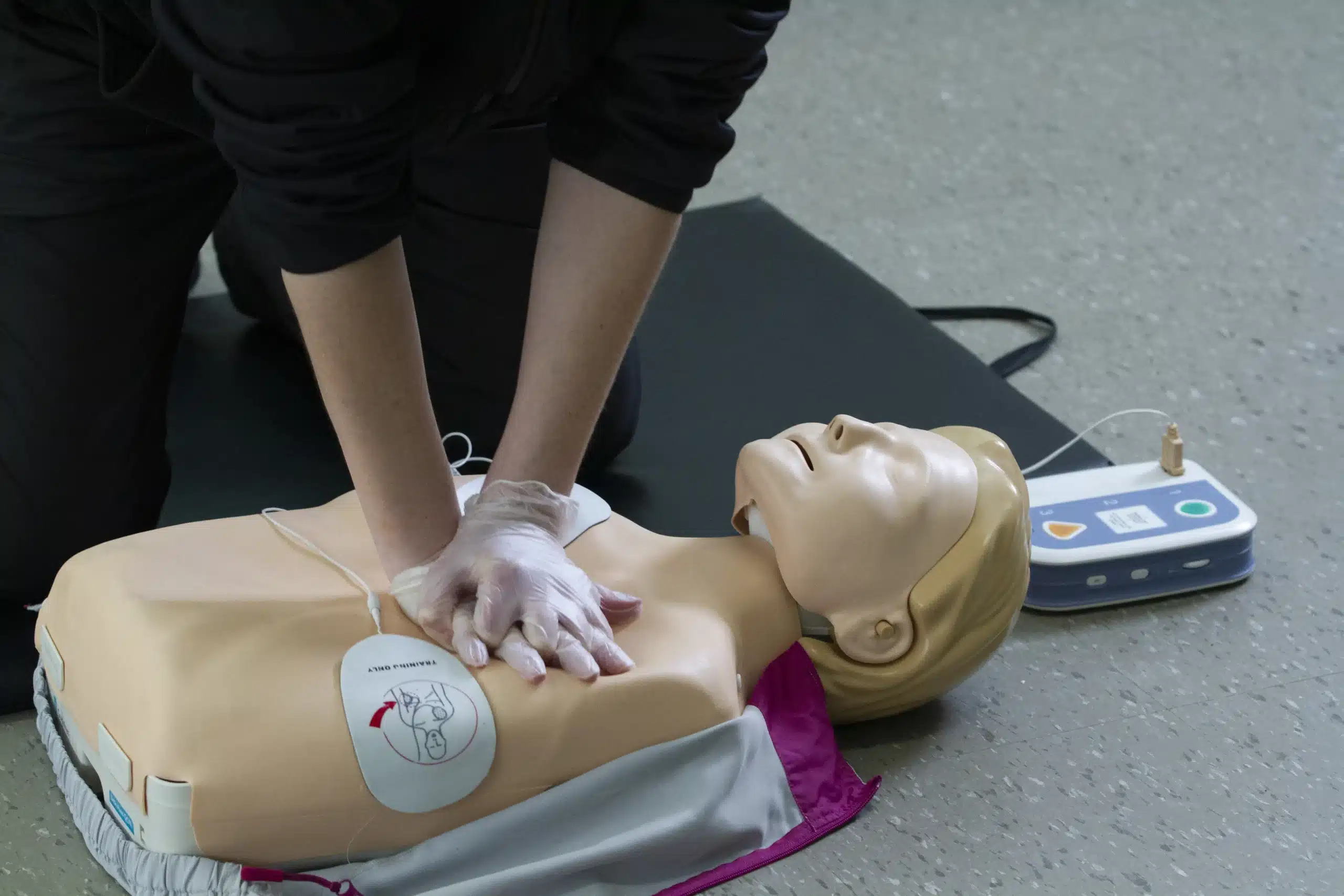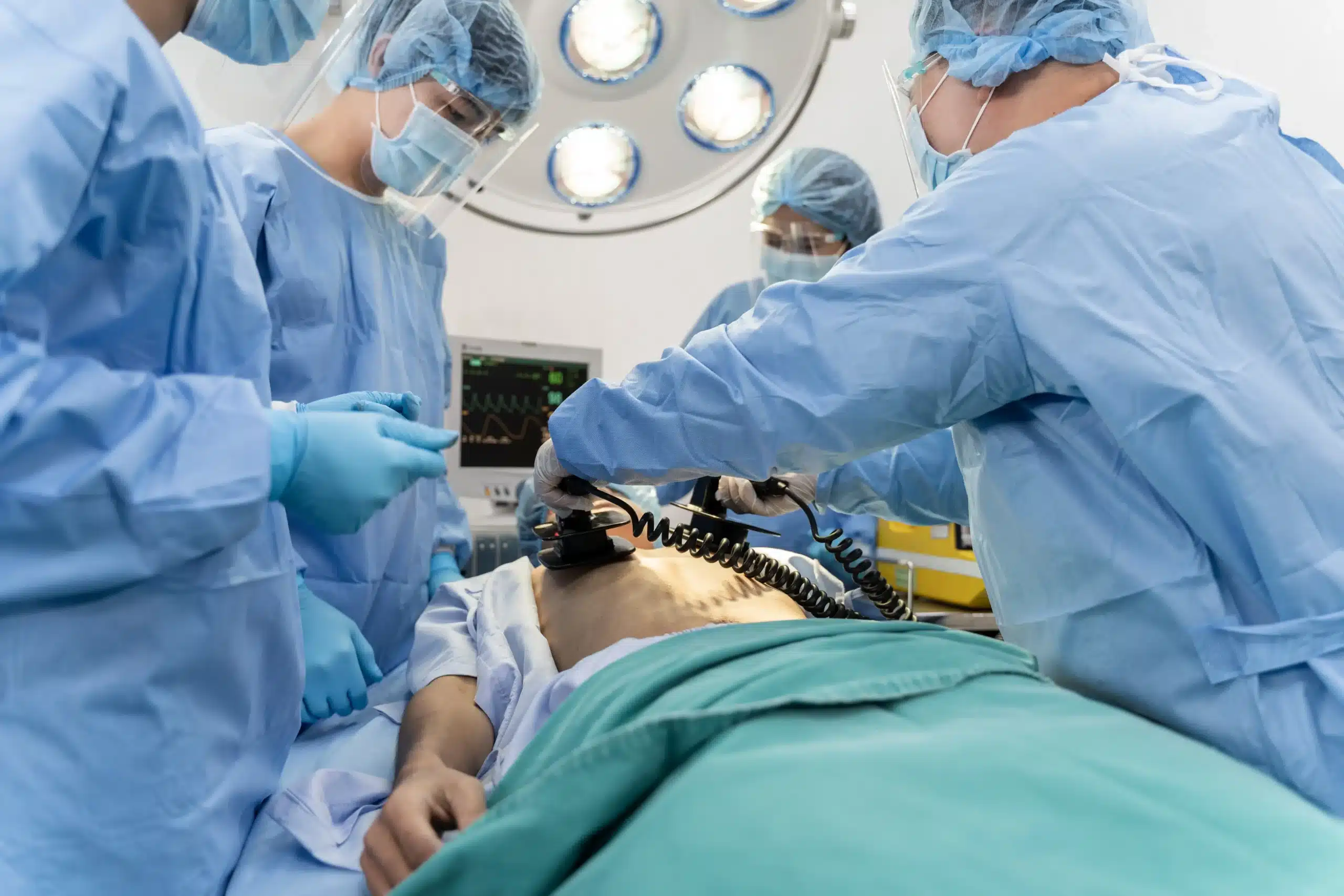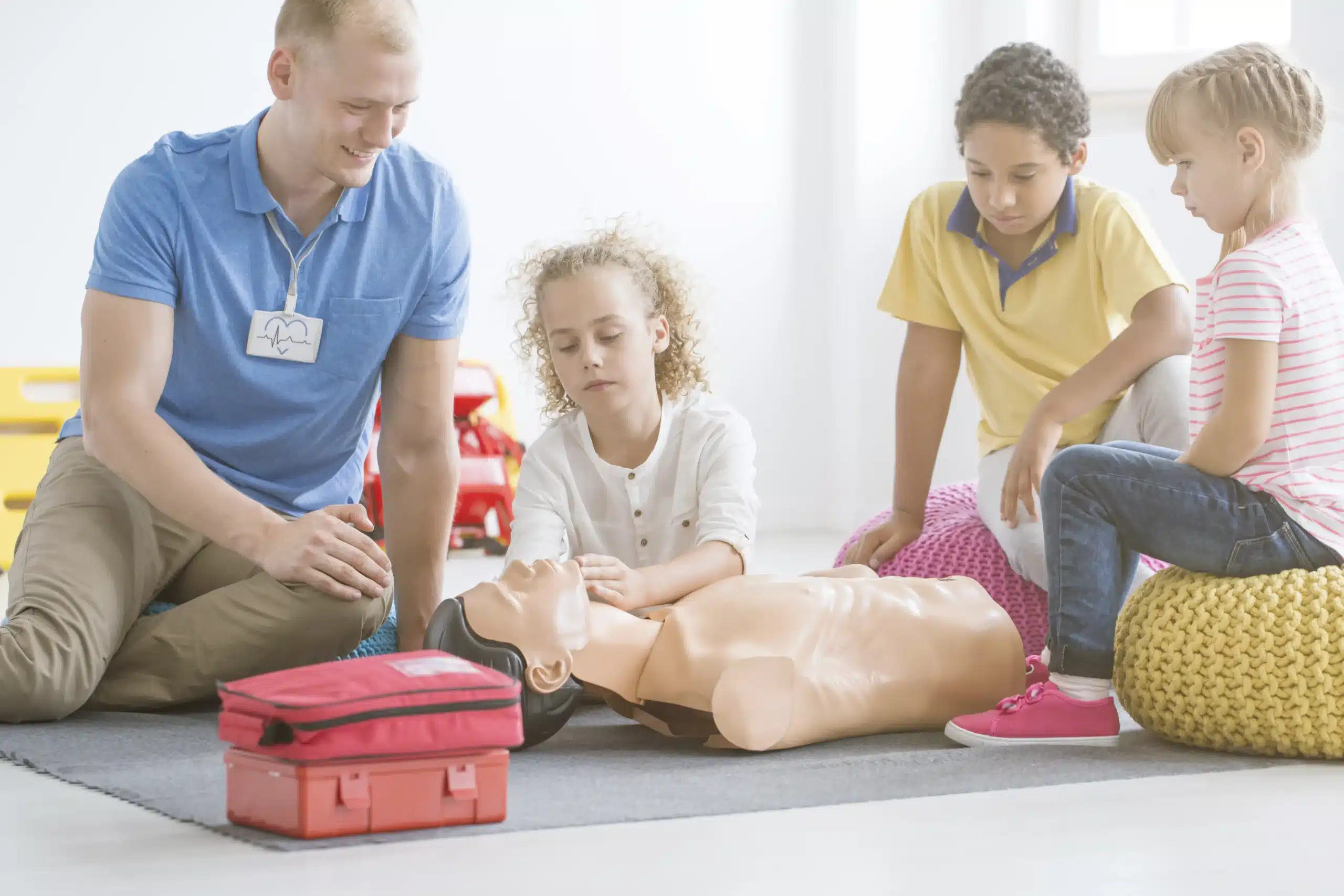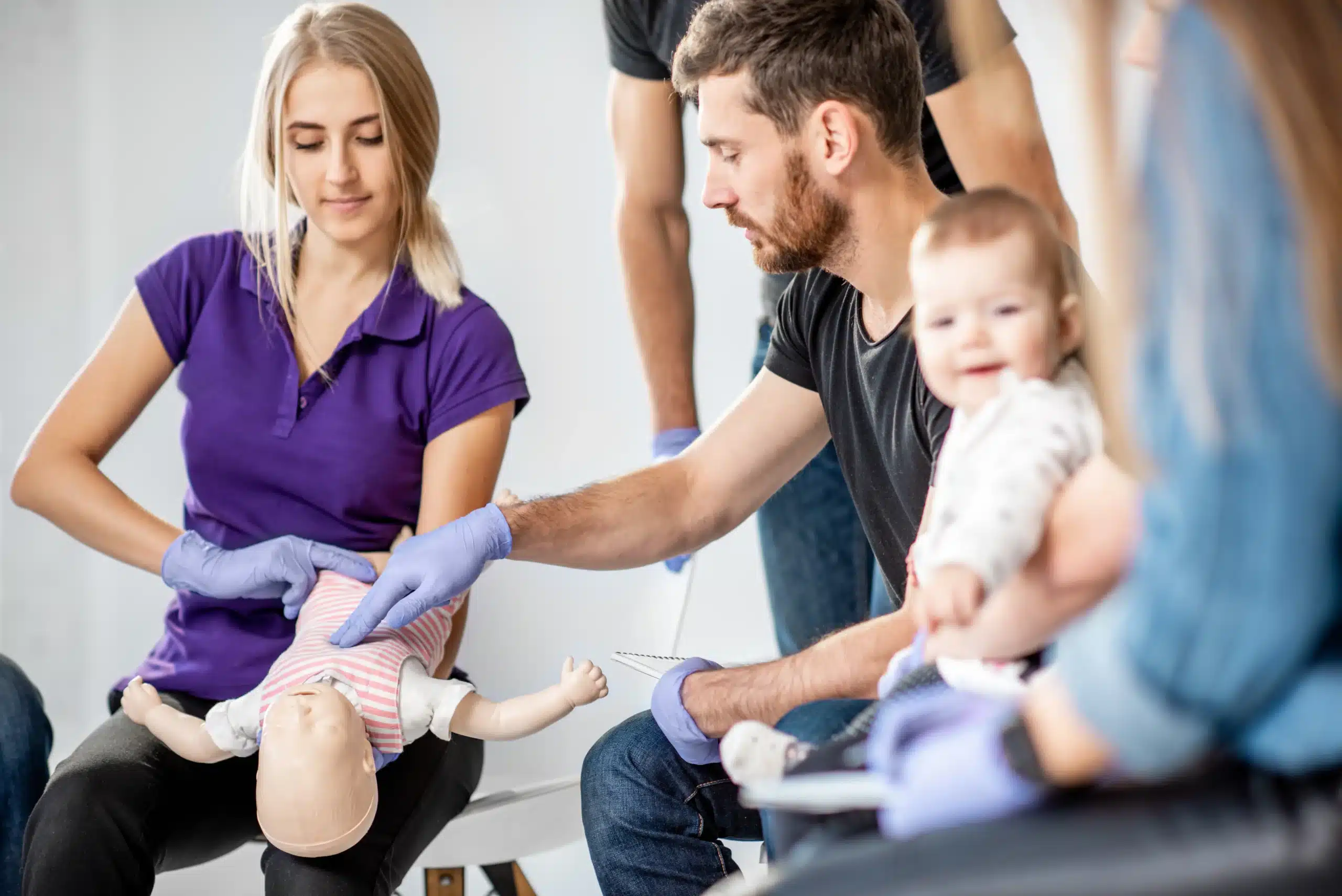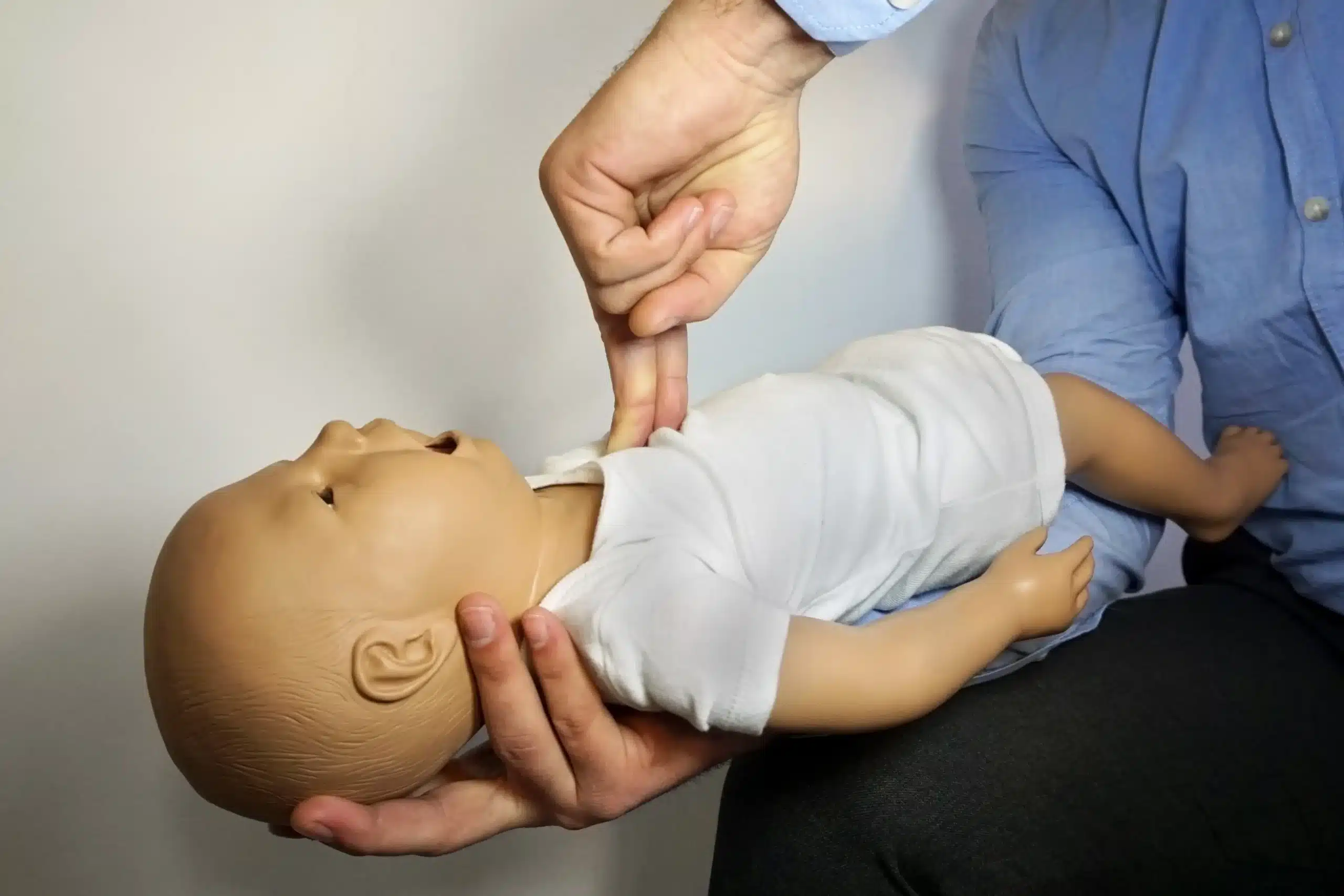Medical emergencies can happen anytime, anywhere. Are you ready to respond? BLS certification equips you with the skills to provide crucial support when it matters most. This article explores the ins and outs of BLS certification, including what it is, why it’s important, and how to find training options like “BLS certification near me.” We’ll also cover the costs, what to expect in a course, and how BLS certification can enhance your career. Let’s get started!
Key Takeaways
- BLS certification empowers you to save lives: It’s a vital skill set for healthcare providers and a valuable asset for anyone who wants to be prepared for an emergency. Explore different learning formats to find the best fit for your needs.
- Finding the right BLS course is easy: Consider factors like cost, location, and the training provider’s reputation. Many providers offer flexible schedules and discounts, making quality training accessible to everyone.
- Staying current with your BLS certification is essential: Remember to renew your certification every two years and stay updated on the latest guidelines to ensure you’re always prepared to provide effective care.
What is BLS Certification & Why is it Important?
Basic Life Support (BLS) certification equips individuals with the skills to respond to medical emergencies. It’s a critical credential for healthcare professionals and a valuable asset for anyone who wants to be prepared to help in a crisis. BLS training goes beyond basic first aid, focusing on immediate intervention for life-threatening conditions like cardiac arrest, stroke, and choking. Having this training allows you to provide crucial support until professional medical help arrives, potentially saving a life. It emphasizes early recognition of these emergencies and the importance of prompt action. For healthcare providers, BLS certification demonstrates a commitment to patient safety and high-quality care. Learn more about the importance of BLS training.
Core BLS Skills
The American Heart Association (AHA) BLS Certification course provides comprehensive training in core lifesaving skills. These skills include high-quality CPR for adults, children, and infants, along with effective ventilation techniques. The training also covers the use of automated external defibrillators (AEDs), which can be essential in restoring a normal heart rhythm during cardiac arrest. You’ll also learn basic airway management techniques to help someone who is choking or having difficulty breathing. These skills are regularly updated to reflect the latest scientific evidence and best practices in emergency care.
Who Needs BLS Certification?
While often associated with doctors and nurses, BLS certification is essential for a much wider range of professionals. It’s vital for anyone in a healthcare setting, including paramedics, EMTs, physician assistants, medical assistants, and dental professionals. BLS certification is also highly recommended for those in fields like physical therapy, athletic training, and education, where medical emergencies can occur. Other professionals who benefit from BLS training include lifeguards, security personnel, and childcare providers. Ultimately, having these skills can empower you to make a difference in any situation where someone’s life is at risk. Understanding BLS principles is crucial for healthcare workers and contributes significantly to patient safety. Learn more about BLS for healthcare providers.
Find BLS Certification Courses Near You
Finding the right BLS certification course means understanding your options. Let’s explore the most common ways to find BLS training near you.
Local Training Centers & Hospitals
Many hospitals and local training centers offer AHA BLS certification courses. These in-person courses provide hands-on training with certified instructors, allowing you to practice skills and ask questions in real-time. Check with hospitals and community centers in your area, or search online for “BLS training centers near me.”
Online Course Locators
If a busy schedule or other obligations make in-person classes difficult, or you simply prefer learning at your own pace, online BLS certification might suit you better. These online courses typically include interactive modules, videos, and assessments. Use online course locators to find options that meet your needs. Choose a reputable provider aligned with current AHA guidelines.
San Ramon CPR Courses
For those in the San Ramon, Dublin, or Danville areas, San Ramon CPR Courses offers convenient and affordable BLS certification. They provide AHA-certified courses taught by experienced instructors, with a focus on practical skills development. Group discounts and a low-price guarantee make high-quality training accessible.
Choose the Right BLS Training Format
Finding the right BLS training format depends on your learning style, schedule, and budget. Let’s break down the most common options so you can make the best choice for your needs.
In-Person Training: Pros & Cons
In-person BLS training offers a structured learning environment with direct interaction with an instructor. This format excels in providing hands-on practice, crucial for mastering essential lifesaving skills like CPR and using an AED. You’ll also have the opportunity to ask questions and receive immediate feedback, ensuring you’re performing techniques correctly. This comprehensive approach builds confidence and reinforces learning. However, in-person classes typically require a greater time commitment due to travel and fixed schedules.
Online Courses: Flexibility & Limitations
Online BLS certification courses offer unparalleled flexibility. You can learn at your own pace, anytime, anywhere, making them ideal for busy professionals or those with limited access to physical training centers. This format often allows you to revisit materials as needed, beneficial for reinforcing knowledge. However, online courses may fall short on hands-on practice—a critical component for effective skill retention. While some programs offer virtual simulations, they may not fully replicate working with a physical manikin and receiving real-time instructor feedback.
Blended Learning: Convenience & Hands-On Practice
Blended learning combines the best of both worlds. You’ll complete the cognitive portion of the course online, enjoying the flexibility and self-paced learning that online formats offer. Then, you’ll attend an in-person skills session to practice what you’ve learned under the guidance of a certified instructor. The American Red Cross, for example, offers this blended learning approach for their BLS program. This format conveniently provides both theoretical knowledge and practical skills, making it a popular choice.
BLS Certification Costs & Financial Options
Knowing the typical costs associated with BLS certification and exploring available financial options can help you budget effectively. Let’s break down the expenses and potential ways to save.
Average Course Costs
BLS certification course costs vary based on several factors, including your location, the training provider, and the course format (online, in-person, or blended learning). Generally, you can expect to pay somewhere between $70 and $100 for a BLS certification course. It’s always a good idea to compare prices and check what’s included in the course fee, such as study materials, your certification card, and any retake options. For a good overview of BLS Certification in San Ramon, check out this helpful guide.
Group Discounts & Financial Aid
If you’re part of a group or organization needing BLS certification, look for group discounts. Many training centers offer reduced rates for multiple participants from the same company or group. This can be a significant way to save on training costs, especially for larger organizations. CPR providers often have information on discounts available, so research various options. In some cases, financial aid or payment plans may be available, so it’s always worth asking your chosen provider about these options. This guide on CPR Certification in San Ramon offers helpful information on finding the best options for your needs.
San Ramon CPR Courses’ Low Price Guarantee
San Ramon CPR Courses offers a low price guarantee on their BLS certification courses. This commitment to affordability makes high-quality training accessible. They provide convenient class schedules, serving San Ramon, Dublin, and Danville, CA, with courses held at Bishop Ranch 1. Be sure to check their website for the latest course schedules and pricing. Combined with their focus on convenience and issuing certification cards upon completion, San Ramon CPR Courses offers a valuable and budget-friendly option.
What to Expect in a BLS Certification Course
So, you’ve decided to get BLS certified—fantastic! Knowing what to expect can help you feel prepared and confident going into your training. Here’s a glimpse into a typical BLS course:
Course Duration & Curriculum
A BLS certification course typically takes a few hours to complete. The curriculum covers essential life-saving techniques, based on the latest guidelines from the American Heart Association. You’ll learn how to recognize life-threatening emergencies, provide high-quality chest compressions, deliver rescue breaths, and use an AED. BLS certification is valid for two years, so remember to mark your calendar for renewal when the time comes. Check with your certifying organization for specific renewal policies.
Hands-On Skills Practice
BLS courses aren’t just lectures. You’ll get plenty of opportunities to practice your skills in a safe and supportive environment. Expect to work with mannequins and other training equipment to simulate real-life scenarios. Instructors will guide you through each skill, providing feedback and ensuring you’re comfortable performing them correctly. This hands-on practice is crucial for building the muscle memory and confidence you’ll need to respond effectively in a real emergency. It’s also a chance to ask questions and get personalized guidance from experienced professionals. For more information on the importance of hands-on training, check out this guide on basic life support.
Written & Practical Exams
Most BLS courses include both a written exam and a practical skills test. The written exam assesses your understanding of the course material, while the practical exam evaluates your ability to perform the skills you’ve learned. Don’t worry, though—the exams are designed to be straightforward and fair. As long as you pay attention during the course and participate in the hands-on practice, you’ll be well-prepared. Many courses offer practice tests and review sessions to help you solidify your knowledge and skills before the exams. Once you pass both the written and practical exams, you’ll receive your BLS certification card, valid for two years. For details on what’s included in a BLS certification, take a look at this resource.
Top BLS Certification Providers
Finding the right BLS certification provider is key to receiving high-quality training. Several respected organizations offer comprehensive BLS courses, each with its own strengths. Let’s explore some of the leading providers:
American Heart Association (AHA)
The American Heart Association (AHA) is a trusted authority in CPR and emergency cardiovascular care. Their BLS certification courses equip participants with the knowledge and skills to respond effectively to life-threatening emergencies. AHA courses cover core life-saving techniques, emphasizing high-quality CPR and teamwork. They offer various course formats, including in-person and blended learning options. For those seeking training in San Ramon, you can find more information on our blog about BLS Certification in San Ramon.
American Red Cross
The American Red Cross is another well-known provider of BLS certification. Their courses focus on essential skills and knowledge for healthcare providers and first responders. The Red Cross offers training options for individuals and groups, preparing participants for real-world emergency situations.
National CPR Foundation
The National CPR Foundation offers various CPR and BLS courses known for their affordability and accessibility. They aim to make obtaining certification easier, providing various learning options to suit different needs and budgets. You can explore more details about BLS and common misconceptions on Medtigo’s blog.
ProTrainings
ProTrainings offers flexibility with both online and in-person BLS certification courses. This allows busy professionals to fit training into their schedules, whether they prefer online learning or the hands-on experience of a classroom setting. For further insights into BLS certification, you can read about debunking common myths on American Health Training’s website.
San Ramon CPR Courses
San Ramon CPR Courses provides a variety of American Heart Association (AHA) certifications, including BLS. We offer a convenient location for those in the San Ramon, Dublin, and Danville areas, with a commitment to affordable pricing and group discounts. Check out our low price guarantee. We also offer courses for other certifications, including RQI classes and EMSA Child Care Health & Safety. For more information about CPR and First Aid certification, visit our CPR and First Aid page.
Maintain Your BLS Certification
Once you’ve earned your BLS certification, staying current is key. Knowing what’s required to maintain your credentials ensures you’re always prepared to provide high-quality care.
Certification Renewal
BLS certification is valid for two years. It’s important to keep track of your expiration date and plan for renewal. Renewal courses are available, and you can often recertify even if your certification has lapsed within the past 30 days. This flexibility gives you a little wiggle room to get recertified without starting from scratch. Both CPR and BLS certifications typically follow this two-year cycle and offer similar renewal options.
Stay Updated on Guidelines
Emergency care guidelines are constantly evolving as medical knowledge advances. The curriculum for BLS certification is developed and reviewed by medical and scientific experts, ensuring your training reflects the latest best practices. Red Cross BLS training programs, for example, use a Scientific Advisory Council to keep their courses up-to-date. Plus, many programs emphasize practical, real-world training scenarios. This hands-on approach helps solidify your skills and builds your confidence in responding to actual emergencies. Staying updated on these guidelines ensures you’re providing the most effective care possible.
Prepare for BLS Certification Success
Getting ready for your BLS certification involves more than just showing up for class. A little prep work goes a long way! Here’s how to set yourself up for success:
Essential Study Materials & Resources
The right study materials can make a real difference in your BLS training. Both the American Red Cross and the American Heart Association (AHA) offer resources designed to complement their courses. Look for study guides, practice tests, and videos demonstrating key skills like CPR and using an AED. Many programs, like the Red Cross blended learning BLS course, combine online learning with in-person skills sessions, allowing you to learn the material at your own pace before practicing with an instructor. The AHA relies on a Scientific Advisory Council to develop and review its curriculum, ensuring your training reflects up-to-date medical and scientific knowledge.
Pre-Course Requirements
Before you sign up for a BLS course, double-check any prerequisites. While some courses are open to everyone, others might require proof of prior certifications. For example, if your BLS certification is nearing its two-year expiration date, you’ll likely need to take a renewal course. These are often available within 30 days of your expiration date, so plan ahead. The AHA’s BLS course is designed for various individuals, including healthcare providers and anyone else who might need to perform CPR or other basic cardiovascular life support skills. Check with your chosen training center, like San Ramon CPR Courses, to confirm their specific requirements.
Tips for Mastering BLS Skills
BLS skills require both knowledge and practical application. To really master these skills, consider these tips:
- Hands-on practice is key: Don’t be afraid to ask questions and take advantage of every opportunity to practice your skills during the course.
- Focus on critical thinking: BLS isn’t just about memorizing steps. It’s about understanding why those steps are important and how to adapt in real-world scenarios. The Red Cross, for instance, emphasizes practical training scenarios that focus on critical thinking, teamwork, and communication in addition to technical skills.
- Choose the right learning format: Think about your learning style and schedule. Do you prefer in-person instruction, the flexibility of online courses, or a blended learning approach? Finding the right fit will make a big difference in how effectively you learn. Consider the different learning formats available through the American Red Cross to find what works best for you.
BLS Certification & Career Advancement
BLS certification, or Basic Life Support certification, goes beyond a simple credential—it signifies your readiness to respond effectively in medical emergencies. It’s a skill set applicable to various professions, directly impacting patient care and career progression. Let’s explore how
Industries that Require BLS Certification
While we often associate it with healthcare, BLS certification is valuable across numerous industries. Medical professionals, like doctors, nurses, and paramedics, rely on these skills daily. But other professions also benefit from BLS training, including teachers, coaches, lifeguards, and even childcare providers. Understanding BLS isn’t just for healthcare workers; it’s a life skill that can make a difference in any setting. Many misconceptions exist around who needs BLS training, but the truth is, it’s a valuable asset for anyone who wants to be prepared for an emergency. Debunking these common myths about BLS certification is crucial to understanding its wide applicability. Some assume it’s only for healthcare professionals, but BLS training is important in many emergencies.
How BLS Skills Enhance Your Career
BLS certification demonstrates a commitment to safety and preparedness, qualities highly valued by employers. For healthcare providers, BLS skills directly improve patient outcomes in critical situations. This translates to increased confidence in your abilities and a higher standard of care. Beyond healthcare, BLS certification can set you apart from other candidates, showcasing your proactive approach to safety and well-being. Whether you’re pursuing a career in healthcare or another field, BLS training provides a foundation of life-saving skills that can enrich your professional life and potentially save lives. Consider pursuing BLS certification—it’s more than just a credential; it’s an investment in your career and the well-being of those around you.
Overcome Common BLS Certification Challenges
Let’s be honest: getting any kind of certification takes time and effort. But BLS certification is absolutely worth it, and thankfully, more accessible than you might think. Here’s how to overcome some common hurdles:
Find Convenient Class Schedules
Juggling work, family, and other commitments can make finding time for a BLS course tricky. But with a little planning, you can find a schedule that works. Look for courses offered on weekends, evenings, or even during weekdays. Many organizations offer intensive one-day courses, so you can knock it out quickly. San Ramon CPR Courses, for example, holds classes daily at their Bishop Ranch 1 location, giving you plenty of options.
Balance Quality & Affordability
It’s natural to be cost-conscious, but don’t let budget concerns stop you from pursuing BLS certification. Think of it as an investment in your skills and career. While cost is a factor, remember that high-quality training is essential. Look for courses that offer a good balance of affordability and comprehensive instruction. Check if your employer offers reimbursement or explore payment plans. San Ramon CPR Courses even has a low price guarantee, so you can feel confident you’re getting a good deal.
Online vs. In-Person Training Concerns
Deciding between online and in-person BLS training depends on your learning style and circumstances. Online courses offer flexibility, which is great if you have a busy schedule or limited access to in-person classes. You can learn at your own pace and revisit materials as needed. However, in-person training provides hands-on practice and direct interaction with an instructor. This can be invaluable for mastering essential skills and asking questions in real-time. Some providers offer blended learning options that combine the best of both worlds. Ultimately, the best format is the one that allows you to learn and retain the information effectively. Both online and in-person certifications are credible and accepted, so choose the format that best suits your needs.
Related Articles
- BLS Recertification Near Me: A Complete Guide – San Ramon CPR Classes
- BLS Training Near Me: A Complete Guide – San Ramon CPR Classes
- BLS Certification in Danville: Your Guide – San Ramon CPR Classes
- Basic Life Support (BLS) in San Ramon: A Practical Guide – San Ramon CPR Classes
- BLS Courses in Dublin: Your Complete Guide – San Ramon CPR Classes
Frequently Asked Questions
How long does it take to get BLS certified? BLS certification courses typically take a few hours to complete, sometimes even fitting within a single day. The exact duration depends on the course format (online, in-person, or blended) and the specific provider.
What’s the difference between online and in-person BLS training? Online BLS training offers flexibility, allowing you to learn at your own pace and on your own schedule. In-person classes provide a structured environment with hands-on practice and direct interaction with an instructor. Blended learning combines online coursework with an in-person skills session.
How much does BLS certification cost? The cost of BLS certification varies depending on the training provider, location, and course format. Expect to pay between $70 and $100. Look for group discounts or financial aid options if available.
How often do I need to renew my BLS certification? BLS certification is typically valid for two years. You’ll need to take a recertification course before your current certification expires to maintain your credentials.
What if my BLS certification has already expired? Many training centers allow you to renew your BLS certification even if it’s recently expired, often within a 30-day grace period. Check with your chosen provider for their specific renewal policy.
